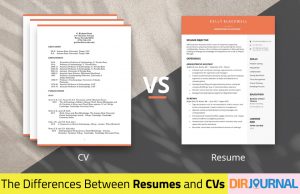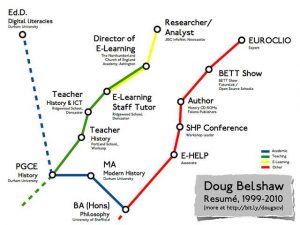



If you’re in the job market, you know you have to send potential employers a list of your qualifications. But those qualifications can be presented in different ways — most notably through either a resume or curriculum vitae (CV). How do you know which one to use? If an employer requests a format that you’re unfamiliar with, can you just substitute the other, or are there significant differences?
Let’s explore both resumes and CVs, and their differences, so you can better decide which to use in your own job search.
A resume is a short document (often just one page) providing a job seeker’s education and work history as well as other skills and qualifications for an open position. This document is provided to the hiring party for review and consideration for a job interview.
A curriculum vitae is a document (often three or more pages long) that some employers request from job seekers. Like a resume, a CV details the applicant’s educational and work history, although there is often more of an emphasis on academic accomplishments.
Overall, a resume and a CV are very similar documents and they both share the same end goal — to help you land a new job. But there are some differences that set them apart. You’ll want to understand those differences so you can deliver your job qualifications in whichever way your potential employer prefers. Making their job as easy as possible can give you a leg up in your job search.
Here are some of the key differences between resumes and CVs:
For some of the basics on creating a job-winning resume, check out this infographic from TopCounselingSchools.org. Then continue below for some of the specific things you would want to include in your resume or CV, depending on the type of job you’re applying for (and its location).
A resume typically includes:
While not always required, you might also include information such as a list of references. You can also opt to state that references are available on request if you want more control over what contact information is given out and when (so a potential employer doesn’t contact your current employer if they don’t know you plan to leave yet for example).
Using keywords in the text of your resume can be important when it gets before a Human Resources person for review. They probably have specific skills and experiences in mind in an ideal candidate, and they’ll be looking for those keywords. Some also use software to sort through resumes initially, and that software can scan for their target keywords as well.
Your CV, assuming it’s being used to apply to an academic or research position where they’re more common, should include the following:
Do you need more help writing or formatting your resume? If so, take a look as these sample resumes as a guide.
Here are a few good examples of CVs that you can use for inspiration.
Do you have a preference between resumes and CVs? Which is more common in your region or industry? If you’ve ever been in a hiring position, which do you prefer when vetting job candidates? Share your thoughts on the differences between resumes and CVs in the comments below.
View Comments
goood information... now whenever i will send my one page info then i will name it resume....
i was always sending CV
thanks......for sharing knowledge........